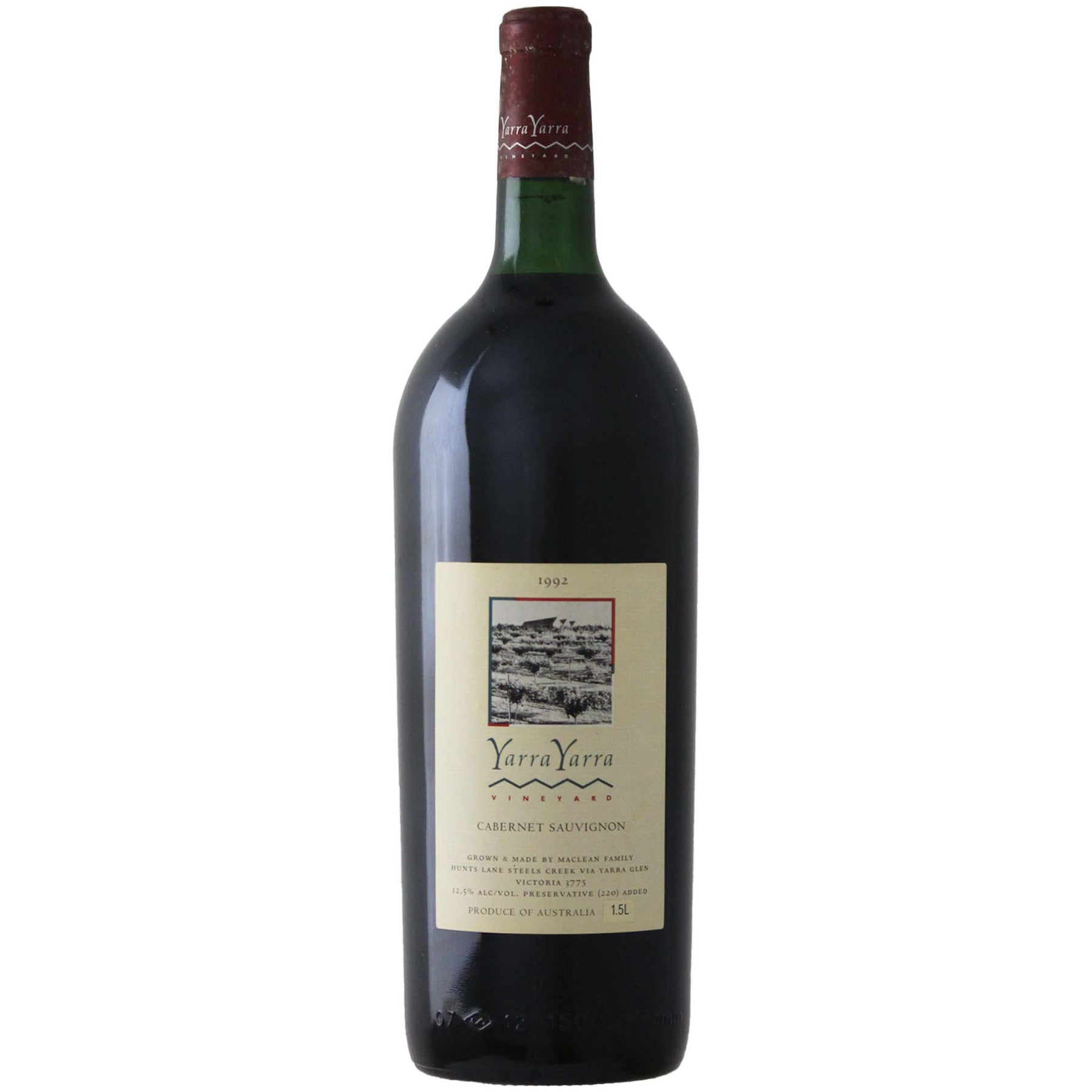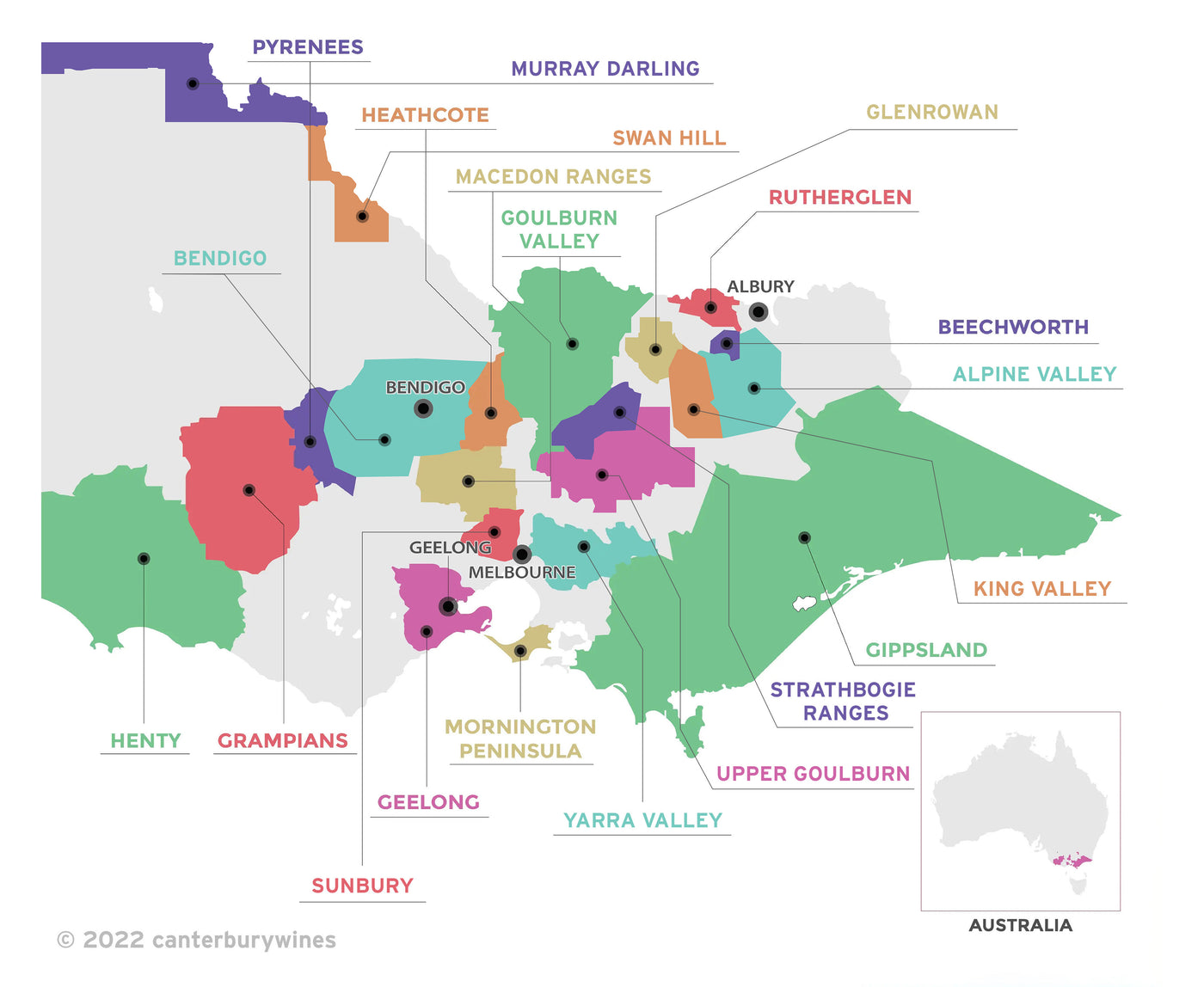
Yarra Yarra Cabernet Sauvignon 1992 (1500ml)
Style: Red Wine
Closure: Cork
Yarra Yarra Cabernet Sauvignon 1992 (1500ml)
Warehouse
34 Redland Drive
Vermont VIC 3133
Australia
Critic Score: Not Rated
Alcohol: 12.5%
Size: 1500 ml
Drink by: 2030
"Although Ian Maclean did little or nothing to gain publicity, word got around that the wines were of exceptional quality." James Halliday
Ian Maclean purchased a 17-hectare site at Steels Creek at the northern end of the Yarra Valley in 1977 and established Yarra Yarra. He planted 2 hectares of the classic Bordeaux varieties Cabernet Sauvignon, Cabernet Franc and Merlot in 1979/1980. The first vintage produced under the Yarra Yarra label was in 1983. Production is tiny with around 1500 to 2000 cases produced annually.
"Yarra Yarra is amongst the very finest makers of Australian Cabernet blends." Jeremy Oliver
About the winery

It all started in 1974 when Ian Maclean attended a wine tasting led by Michael Broadbent Master of Wine (MW). Ian tasted some of the great Bordeaux first growths and his palate and wine passion were expanded exponentially. There was no going back and in 1977, after a two year search, he purchased a 17-hectare site at Steels Creek at the northern end of the Yarra Valley. The site contained three well-drained northerly slopes perfect for the planting of vines.
In 1979, the first hectare of vines was planted followed by a further hectare in 1980. The classic Bordeaux varieties Cabernet Sauvignon, Cabernet Franc and Merlot, and Sauvignon Blanc and Semillon were planted. There were further plantings totalling five and a half hectares on the other two northerly slopes in 1996 and 1997, again with the classic Bordeaux red and white varieties, except for one hectare of Syrah. These three hills are named after Ian's daughters; Sarah, Phoebe and Charlotte. Finally two hectares, mostly Sauvignon Blanc and Viognier, with a small area of Syrah were planted in 2002 on a gentle westerly slope, called 'the no-name hill'.
Production is tiny with around 1500 to 2000 cases produced annually. The first vintage produced under the Yarra Yarra label was in 1983. Ian wants to make wines which have a complex palate, intense flavour but at the same time finesse and be instantly recognisable as Yarra Yarra. His winemaking philosophy is to let the grapes talk and treat them gently and with respect. He interferes as little as possible in the winemaking process, barely crushing the berries, using natural yeasts, transferring the wines by gravity rather than pumping and adding minimal amounts of sulphur dioxide. Many have said Ian Maclean produces sophisticated wines, bringing an Old World reserve and elegance to New World fruit. Wines from Yarra Yarra are often mistaken as European wines and are pure, natural wines made to be enjoyed with food.
The vineyard philosophy is no irrigation, open canopies, cane pruning, minimal spraying with only organic sprays and no use of pesticides. Yields are purposely kept low, between three and five tonnes per hectare to ensure grapes are produced with intense flavours. The grapes are always picked on flavour and tannin ripeness, never by chemical numbers!
"Despite its small production, the wines of Yarra Yarra found their way into a veritable who's who of Melbourne's best restaurants, encouraging Ian Maclean to increase the estate plantings from 2ha to over 7ha in 1996 and '97. Demand for the beautifully crafted wines continued to exceed supply, so the Macleans planted yet more vines and increased winery capacity. All this seemed to go up in flames as the terrible 2009 Black Saturday bushfires consumed the winery, irreplaceable museum stock from '83 to 2000, the then yet-to-be-bottled '08 Syrah and '06 and '08 Sauvignon Blanc Semillon (the '07 vintage had been destroyed by frost), and scorched or burnt 50% of the estate vineyards. Friends rallied to the cause, and Ian has embarked on the long job of repairing/replacing the vineyard trellis system, methodically replanting the half of the vineyard destroyed by fire and introducing the use of organic/biodynamic sprays. The new winery was finished at the end of April '10. When friends asked why he should do all this, having turned 65, his answer was simple: 'My greatest wines have yet to be made.'" James Halliday

Victoria
Victoria is home to more than 800 wineries across 21 wine regions. The regions are Alpine Valley, Beechworth, Bendigo, Geelong, Gippsland, Glenrowan, Goulburn Valley, Grampians, Heathcote, Henty, King Valley, Macedon Ranges, Mornington Peninsula, Murray Darling, Pyrenees, Rutherglen, Strathbogie Ranges, Sunbury, Swan Hill, Upper Goulburn and Yarra Valley.
Victoria's first vines were planted at Yering in the Yarra Valley in 1838. By 1868 over 3,000 acres had been planted in Victoria, establishing Victoria as the premier wine State of the day. Today, the original vineyards planted at Best's Wines are among the oldest and rarest pre-phylloxera plantings in the world.
Victoria's climate varies from hot and dry in the north to cool in the south and each wine region specialises in different varietals. For example, Rutherglen in the north is famous for its opulent Muscats and Topaque and bold reds, while the many cooler climate regions near Melbourne produce world class Chardonnay and pinot Noir. Victoria is truly a wine lover's playground.

